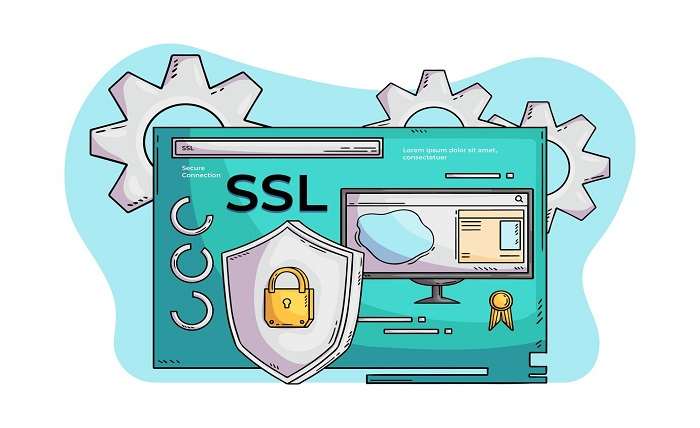
In today’s digital landscape, securing multiple domains and subdomains is crucial for businesses. Multi-domain SSL Certificates provide an efficient solution for protecting various domain names under a single certificate, simplifying management and enhancing security. Understanding the intricacies of these certificates can help organizations make informed decisions.
Understanding Multi-Domain SSL Certificates
Multi-domain SSL Certificates are specifically designed to secure multiple domain names within a single certificate, allowing organizations to streamline their security efforts. These certificates utilize Subject Alternative Names (SANs), which enable the inclusion of various hostnames, such as www.example.com and mail.example.com, ensuring comprehensive protection across different domains. This capability is particularly useful for environments like Microsoft Exchange and Office Communications, where multiple services require secure connections. By consolidating multiple SSL certificates into one, organizations can manage their certificate lifecycle more effectively while reducing administrative burdens.
What is a Multi-Domain SSL Certificate?
A Multi-Domain SSL Certificate, often referred to as a SAN certificate, can secure your main domain alongside several Subject Alternative Names in a single certificate. This versatile type of certificate facilitates Unified Communications, effectively protecting environments such as Microsoft Exchange 2010 Server or Mobile Device Manager. For instance, a Multi-Domain SSL certificate can secure domains like www.namecheap.com, www.exchange.namecheap.com, and www.namecheapgroup.com seamlessly. It’s essential to recognize that the www and non-www versions of a domain are treated as separate entities, necessitating their inclusion in the SAN list for full coverage. Moreover, unlike traditional SSL certificates, Multi-Domain SSL certificates do not require multiple dedicated IP addresses, making deployment and management significantly simpler.
Benefits of Using Multi-Domain SSL Certificates
Organizations that utilize Multi-Domain SSL Certificates experience numerous benefits, particularly in terms of cost and efficiency. By consolidating multiple SSL certificates into one, businesses can significantly reduce administrative overhead and complexity, ultimately leading to lower costs when purchasing and renewing certificates. These certificates can secure anywhere from 3 to 100 fully qualified websites, enhancing the overall security posture of their online presence. Furthermore, managing all domains under one certificate simplifies compliance with security standards and fosters greater customer trust, as visitors can easily verify the protection of all associated domains. The quick issuance of these certificates, often within minutes, allows businesses to secure their websites without unnecessary delays.
How Multi-Domain SSL Certificates Work
Multi-domain SSL Certificates function by allowing multiple domain names to be included within a single certificate through the use of SANs. Each domain is authenticated as a Subject Alternative Name, ensuring that when users access the secured domains, a robust secure connection is established via encryption protocols. This process guarantees that the data exchanged between the user’s browser and the server remains confidential and secure. The flexibility of Multi-Domain SSL certificates extends to various types of domains, including subdomains and different top-level domains, making them an ideal solution for organizations managing diverse web properties. This streamlined approach to certificate management significantly simplifies the security landscape for businesses with multiple online assets.
Wildcard Multi-Domain SSL Certificates
Wildcard Multi-Domain SSL Certificates provide a distinct advantage for organizations that need to secure multiple subdomains under a single primary domain. This type of certificate allows for the inclusion of an unlimited number of subdomains, which is particularly advantageous for businesses with dynamic web properties. For example, a Wildcard certificate for *.example.com would cover domains like www.example.com and mail.example.com, thus simplifying management. This flexibility reduces the need for multiple certificates, making it easier to manage SSL security across various subdomains. Wildcard Multi-Domain SSL Certificates are especially beneficial for organizations anticipating frequent changes or additions to their subdomains, as they can effortlessly add new subdomains without obtaining additional certificates.
Choosing the Right Multi-Domain SSL Certificate
Evaluating Your Needs for a Multi-Domain SSL
When selecting a Multi-Domain SSL certificate, it is vital to assess your organization’s specific requirements. Begin by determining the number of domains you wish to secure, as some multi-domain certificates can secure up to 100 domains, while others may limit the number. Consider the level of validation you require; if establishing trust is paramount, an Extended Validation (EV) SSL certificate may be necessary. Additionally, evaluate the types of domain names, including subdomains and top-level domains, that need protection. Pay attention to budget constraints, factoring in all costs, such as renewal fees and the total cost of ownership. Furthermore, consider the certificate authority’s speed of issuance and customer support, as these elements contribute significantly to a smooth purchasing experience.
Comparing Certificate Authorities for Multi-Domain SSL
Choosing the right Certificate Authority (CA) is a critical step in acquiring a Multi-Domain SSL certificate. Each CA offers different types of multi-domain certificates, which vary in validation levels, warranties, and pricing. Prioritize well-established CAs known for their reliability and robust customer service. It’s essential to examine the warranty associated with each certificate, as this can provide essential financial protection in the event of a security breach. The ease of installation and the management tools available are also important factors to consider, as they will affect how efficiently you can manage your SSL certificates. Finally, reading reviews and testimonials from other users will give you valuable insights into the experiences of businesses similar to yours when working with a particular CA.
Also Read : Yearlymagazine
How to Purchase a Multi-Domain SSL Certificate
Steps to Buy a Multi-Domain SSL Certificate
The process of purchasing a Multi-Domain SSL certificate is straightforward and involves several key steps. Start by determining which type of Multi-Domain certificate aligns with your needs, whether it be a standard certificate, an EV certificate, or a wildcard certificate. Next, select a reputable Certificate Authority (CA) and browse their website for available options. After selecting the appropriate certificate, provide the domain names you wish to secure, including any SANs. Complete the payment process, which usually requires providing contact and billing information. Once your purchase is finalized, the CA will initiate the validation process, which varies in duration depending on the type of certificate selected. Finally, upon issuance, ensure proper installation on your web server to activate secure connections across your domains.



